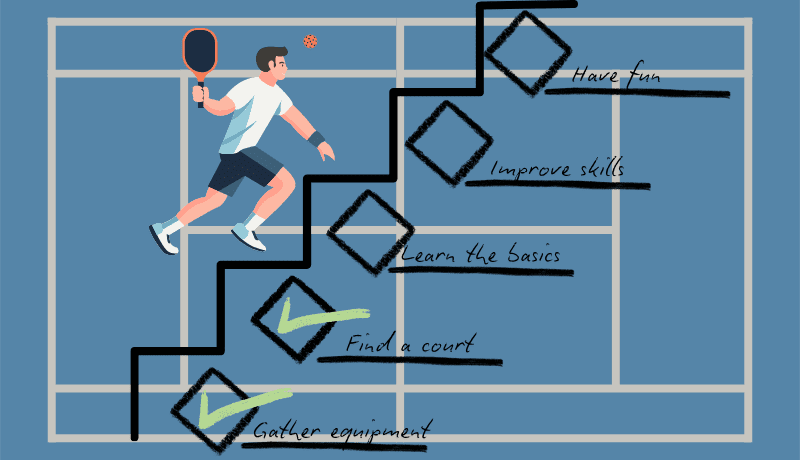So Real List. Maintaining Friendship with a Checklist in Google Keep
Friendship in adulthood is not easy. Fortunately, there are simple tools to make maintaining it easier.

It's often easier to make friends as a child. In adulthood, it becomes more challenging. No wonder there are so many jokes online about arranging friendly meetings when you're over 30. But where does this difficulty come from? Have we all become unresponsive to the voice of friendship?
I wouldn't be so pessimistic. I have a wonderful example in front of my eyes: my five-year-old daughter. She, like many children her age, enjoys playing with friends and visiting them. But she has a team organizing her household, nutrition, hygiene, logistics, and solving other problems.
Here's the secret everyone has been waiting for! Just have a team that takes care of daily chores and other tasks, and friendship becomes strong and joyful again, despite your age.
If you rightly assume that finding such a team in the near future will be difficult, you can resort to an alternative method. This method was shared with me by a delivery manager [1] and Kanban method trainer, Anastasia. Anastasia's list of positions might be unclear. Simply put, her job is to streamline the development process of the required software.
Since university, Anastasia has had close friends. The group regularly exchanges opinions on where to go. At some point, it became clear that ideas for good places come to mind when everyone is asleep. Waking friends up with buzzing wasn't desirable, so they decided to create a joint note in Google Keep titled “Where to Go”.
Wikipedia says: “Google Keep (formerly Google Keep Notes and Google Notes) is a note-taking service included as part of the free, web-based Google Docs Editors suite offered by Google” [2]. Following the good tradition from the previous article mentioning the TickTick service, there will be no app screenshots here, only schematic images. As before, we want to extract the mechanics so that the reader can apply it outside the mentioned software.
The checklist “Where to Go” has its internal logic. The top line indicates the place Anastasia and her friends plan to visit first. The rest are less interesting or less prioritized places. Let's look at this checklist dynamically, starting with this version:
╔══════════════════════════════╗
║ Where to Go ║
║ ║
║ ☐ Hanging Gardens of Babylon ║
║ ☐ Taj Mahal ║
║ ☐ London Museum ║
║ ☐ Mount Everest ║
║ ☐ Great Lakes ║
║ ☐ Eiffel Tower ║
║ ☐ Great Pyramid of Giza ║
╚══════════════════════════════╝This weekend, we want to gather, and the top place is the Hanging Gardens of Babylon. Suddenly, one friend realizes at night that there's a great classical concert on Saturday. Vivaldi's “The Four Seasons” will be played. It seems worth giving up the Hanging Gardens for it. The checklist updates:
╔══════════════════════════════╗
║ Where to Go ║
║ ║
║ ☐ Vivaldi. The Four Seasons ║
║ ☐ Hanging Gardens of Babylon ║
║ ☐ Taj Mahal ║
║ … ║
╚══════════════════════════════╝No one knows about the update yet. But that's okay because the thought is already recorded in the checklist, and in the morning, it can be discussed in the friendly chat. If everyone agrees, “The Four Seasons” will expect grateful viewers this weekend.
Let's assume it happened, the concert was attended, the task was completed. This is reflected in the checklist:
╔══════════════════════════════╗
║ Where to Go ║
║ ║
║ ☐ Hanging Gardens of Babylon ║
║ ☐ Taj Mahal ║
║ … ║
╟──────────────────────────────╢
║ ☑ Vivaldi. The Four Seasons ║
╚══════════════════════════════╝Thanks to Google Keep's features, the completed task went down. If someone didn't manage to attend, they can always go alone because all the information is in place.
Why not just discuss everything desirable in the chat and go where you want? In the chat, everything moves up, making it difficult to understand what's more interesting and what can be postponed. In the Google Keep checklist, everything is visible, and there's always a good selection of activities to fuel friendship.
Of course, the checklist above is fictional. Where have you seen people easily going to the London Museum? It's not that simple! What does a real “Where to Go” checklist look like?
I won't provide links to it here but will outline its structure. The checklist currently has 31 items: 18 completed, 13 waiting. There are not just places and events, but real experiences like 'try anari with rose jam' [3]. There are grand things like “attend the reindeer herders’ festival in Yamal.” All this extraordinary stuff mixes with quite mundane “go to the cinema on Friday” or “visit a museum on the weekend.” Everything has its place in the checklist if it helps friendship.
Thank you for reading! If you have a story about using lists or checklists to make your life, work or business better, please write. It will be great to introduce readers to a new perspective on these familiar things.
List of references:
[1] “What Does a Delivery Manager Do? (With Salary and Skills)” from Indeed website
[2] “Google Keep” from Wikipedia
[3] “Anari cheese” from Wikipedia



